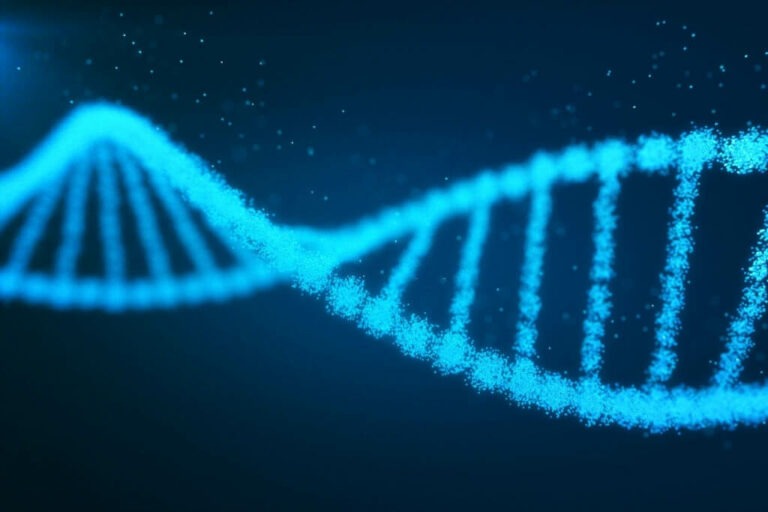Cracking the Obesity Code: How Our Genetics, Hormones and Environment Converge

For decades, the weight loss industry has treated obesity as a relatively simple problem of calorie intake versus physical activity output. The conventional advice to individuals struggling with excess weight has been carbon-copied ad nauseam: eat less, move more. Cut calories, burn fat.
However, even a quick look around illustrates just how ineffective and overly simplistic this energy balance model has been in combatting obesity rates, which have tripled worldwide since 1975. Despite the billions of dollars spent each year on weight loss programs, diets, medications, and surgical interventions, the obesity epidemic has only grown more severe – now affecting over 650 million adults globally.
Rather than a mere mathematical equation, researchers across multiple scientific disciplines are revealing that obesity is far more complex, attributed to a convergence of genetic predispositions, hormonal factors, and environmental influences beyond just diet and exercise alone. Understanding the biochemical “obesity code” that comes into play is proving crucial toward developing more personalized, sustainable solutions for long-term weight management.
“Obesity isn’t just a calorie imbalance, it’s a multi-system, multi-factorial chronic disease that involves a complex interplay between our genes, hormones like insulin, along with environmental exposures that can fundamentally alter how our bodies regulate weight over time,” explains Dr. Lee Kaplan, director of the Weight Control and Diabetes Research Center at Massachusetts General Hospital. “There are so many underlying biological influences that can make someone more prone to obesity. For many people, excess weight isn’t just about overindulging, it’s really their biology working against them.”
At the most fundamental level, our genes play a key role in determining an individual’s innate biological susceptibility to weight gain. Research has identified over 400 different gene variants associated with body mass and fat distribution. Some of these “obesity genes” regulate everything from appetite and satiety hormone levels to how and where the body stores fat for energy reserves.
For those with a strong genetic predisposition toward obesity, their weight set point (the metabolic “sweet spot” range their bodies try to maintain through regulating hunger, energy expenditure, etc.) tends to be programmed much higher from birth. Even after substantial weight loss through extreme calorie restriction, those individuals will face disproportionately powerful biological signals to regain lost weight due to the lower weight existing outside of their bodies’ ideal homeostatic range.
This genetic “programming” of our ideal body weight range interacts heavily with key hormones like insulin, cortisol, and various appetite-regulating hormones like leptin and ghrelin. These hormones serve as the body’s master controllers of energy storage and usage.
For those grappling with weight issues, multiple studies have shown that their fat cells become resistant to the actions of insulin. This is commonly referred to as “insulin resistance,” where the body requires higher and higher levels of insulin to promote efficient storage of glucose and fatty acids in fat cells. The result is elevated blood sugar levels, as well as biochemical signals telling the body to store more fat.
“Once someone becomes obese, a vicious cycle of obesity and insulin resistance develops,” says Dr. Kaplan. “Their adipose tissue stores more fat, secreting substances that make the body’s tissues even more resistant to insulin. High circulating insulin levels then promote even greater obesity by signaling the body to make more fat cells. It’s a self-perpetuating feedback loop written into our metabolic code.”
Many environmental variables can also negatively impact insulin sensitivity and disrupt the hormonal signals tied to regulating appetite, metabolism, and weight maintenance. Poor sleep quality, high stress levels, sedentary behavior patterns, exposure to endocrine-disrupting chemicals, and even gut bacteria imbalances all appear to play roles.
Perhaps one of the most significant environmental factors in the obesity crisis relates to what Dr. Robert Lustig, Professor Emeritus at the University of California, San Francisco, calls “calorie trapping” foods that trigger this hormonal dysregulation. He argues many processed foods high in refined carbohydrates and sugars effectively “hack” our ancestral biological coding in a “toxin” sort of way.
“These hyper-palatable junk foods create a biochemical chaos storm that programs our hormones to take calories that would’ve been burned as energy, and shunt them into fat,” says Dr. Lustig. “Our hunter-gatherer metabolic programming rewarded calorie storage to protect against famine. But now, our modern food supply has effectively weaponized those ancient instructions to make us get fat.”
This calorie-trapping phenomenon appears to be a driving factor in the strong links observed between obesity rates and the prevalence of processed, high-sugar diets around the world. Lustig and others argue the addictive properties of these foods alter the neurochemistry of the brain’s reward pathways in ways that compel overconsumption and further hormonal disruption.
A similar effect occurs with “food rewards,” where our brains release dopamine – the pleasure neurotransmitter – in anticipation of eating highly palatable meals, essentially “hijacking” our food motivation signals to induce cravings and drive intake of those obesogenic foods. This reward system is metabolically coded into our brains through evolution to reinforce the acquisition of calorie-dense foods but self-sabotages us in today’s food environment.
“It’s not unlike drug addiction,” Dr. Lustig laments. “These foods trigger dopamine release, giving us a ‘high’, and then leave us craving more due to biochemical, hormonal, and hedonic hunger created in the brain. No matter how much you eat, you can’t satiate the drive for the reward because it hacks your body’s metabolic programming directly.”
For many people, being stuck in this maelstrom of genetic predispositions, hormonal imbalances and an environment that has overwhelmed our evolutionary programming creates a perfect storm that makes maintaining a healthy weight nearly impossible through diet and exercise alone. That’s why aggressive interventions like obesity medications or weight loss surgery are often required to override and re-regulate the overactive biological drivers of excess weight.
Still, as science unravels the many different interconnected layers of that “obesity code,” it’s becoming increasingly clear that a single, universal solution is unlikely to address such a multi-factorial condition. Approaches that focus on an individual’s unique genetic background, hormonal profile, and environmental exposures will need to form the core of future personalized weight management therapies.
“Just as each person has their own genetic code dictating their hair color or other traits, each person has their own internal obesity coding based on biology and environment,” Dr. Kaplan says. “The future is capitalizing on that personal coding and creating tailored approaches that target each individual’s specific drivers of weight gain or unhealthy metabolic profile. It’s Precision Medicine meets obesity prevention and treatment.”
While cracking the obesity code remains an immense scientific challenge given the myriad strings of genetic, molecular, and environmental complexity involved, further decoding is already sparking major shifts in thinking. Obesity is not a character flaw or lack of willpower – it’s a complex biological circumstance written in our DNA and metabolic instructions.
With a deeper understanding of our internal programming, existing biological manipulations like medications, surgery, or even gene therapies may offer powerful means of overriding the natural weight-promoting code that so many people find themselves battling. And if science can get ahead of preventing that detrimental programming in early life, we might finally have a way to break the obesity cycle once and for all. The key is recognizing that obesity is far more than a simple energy imbalance – it’s a hugely complex biological puzzle longing to be solved.





